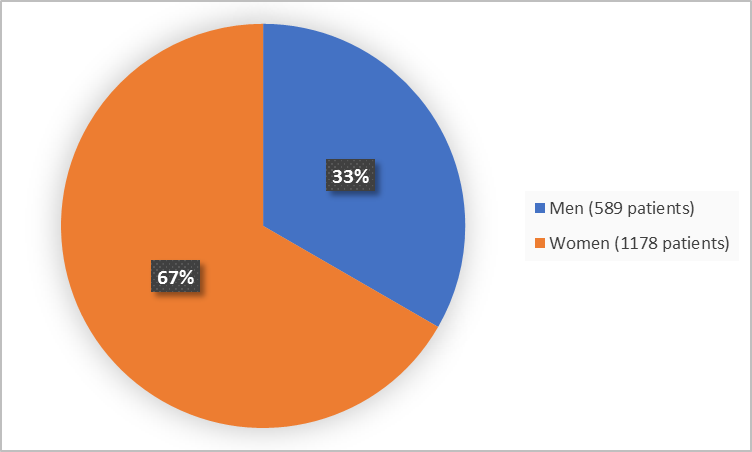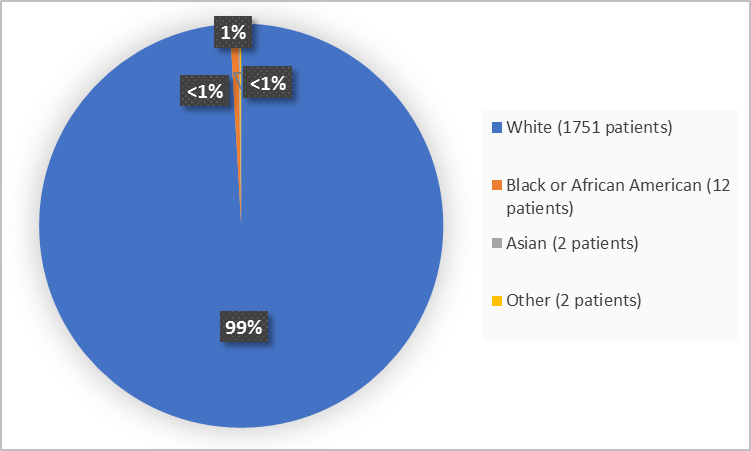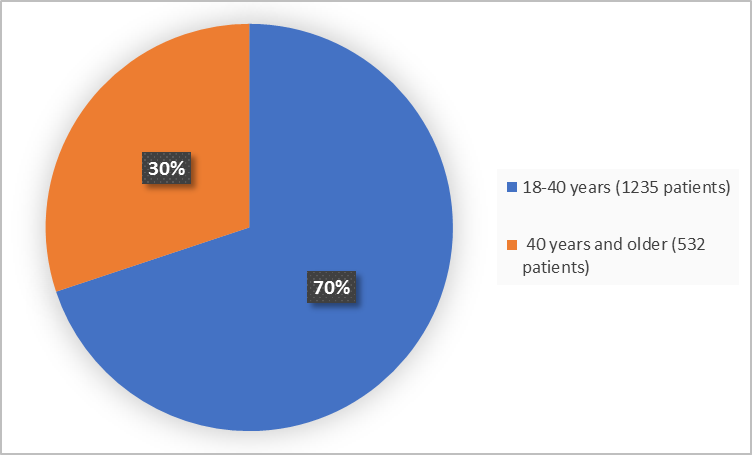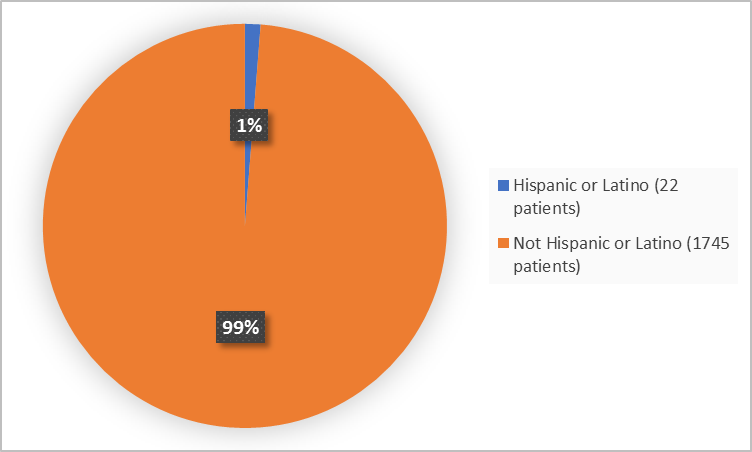Drug Trials Snapshots: ZEPOSIA
HOW TO USE THIS SNAPSHOT
The information provided in Snapshots highlights individuals who participated in the clinical trials that supported the FDA approval of this drug, and whether there were differences among sex, race and age groups. The “MORE INFO” bar shows more detailed, technical content for each section. The Snapshot is intended as one tool for consumers to use when discussing the risks and benefits of the drugs.
LIMITATIONS OF THIS SNAPSHOT
Do not rely on Snapshots to make decisions regarding medical care. Always speak to your health provider about the risks and benefits of a drug. Refer to the ZEPOSIA Package Insert for complete information.
ZEPOSIA (ozanimod)
zeh-poe’-see-ah
Celgene Corporation
Approval date: March 25, 2020
DRUG TRIALS SNAPSHOT SUMMARY:
What is the drug for?
ZEPOSIA is a drug used for the treatment of adults with relapsing forms of multiple sclerosis (RMS) including:
- clinically isolated syndrome,
- relapsing-remitting disease, and
- active secondary progressive disease.
In RMS, patients have episodes of worsening function (relapses) followed by recovery periods. Patients can also experience an increase in the underlying disability, particularly as the disease progresses.
How is this drug used?
ZEPOSIA is a capsule taken by mouth once daily. ZEPOSIA is initially started at a low dose and then slowly increased over the first week.
What are the benefits of this drug?
ZEPOSIA was better in reducing the risk of disease relapse in comparison to interferon β1a, a product approved for the treatment of relapsing forms of MS.
What are the benefits of this drug?
The table below summarizes efficacy results for the evaluated patients. The primary endpoint was the annualized relapse rate (ARR). Additional outcome measures included: 1) the number of new or enlarging MRI T2 hyperintense lesions over 12 and 24 months, 2) the number of MRI T1 Gadolinium-enhancing (Gd+) lesions at 12 and 24 months, and 3) the time to confirmed disability progression, defined as at least a 1-point increase from baseline Expanded Disability Status Scale (EDSS) confirmed after 3 months and after 6 months.
Table 1. Clinical and MRI Endpoints from Trial 1 and Trial 2
| Endpoints1 | Trial 1 | Trial 2 | ||
|---|---|---|---|---|
| ZEPOSIA 0.92 mg (n=447) % |
IFN beta-1a 30 mcg (n=448) % |
ZEPOSIA 0.92 mg (n=433) % |
IFN beta-1a 30 mcg (n=441) % |
|
| Clinical Endpoints | ||||
| Annualized Relapse Rate (Primary Endpoint) | 0.181a | 0.350a | 0.172 | 0.276 |
| Relative Reduction | 48% (p<0.0001) | 38% (p<0.0001) | ||
| Proportion Relapse-free | 78% | 66% | 76% | 64% |
| Proportion of Patients with 3-Month Confirmed Disability Progressionb,c | 7.6% ZEPOSIA vs. 7.8% IFN beta-1a | |||
| Hazard Ratio | 0.95 (p=0.77) | |||
| MRI Endpoints | ||||
| Mean number of new or enlarging T2 hyperintense lesions per MRId | 1.47 | 2.84 | 1.84 | 3.18 |
| Relative Reduction | 48% (p<0.0001) | 42% (p<0.0001) | ||
| Mean number of T1 Gd-enhancing lesionse | 0.16 | 0.43 | 0.18 | 0.37 |
| Relative Reduction | 63% (p<0.0001) | 53% (p=0.0006) | ||
a Through the treatment period (mean duration 13.6 months).
b Disability progression defined as 1-point increase in Expanded Disability Status Scale (EDSS) confirmed 3 months or 6 months later.
c Prospective planned pooled analysis of Trials 1 and 2.
d Over 12 months for Trial 1 and over 24 months for Trial 2.
e At 12 months for Trial 1 and at 24 months for Trial 2.
ZEPOSIA Prescribing Information
Were there any differences in how well the drug worked in clinical trials among sex, race and age?
- Sex: ZEPOSIA worked similarly in men and women.
- Race: The majority of patients were White. The number of patients in other races was limited; therefore, differences in how well ZEPOSIA worked among races could not be determined.
- Age: ZEPOSIA worked similarly in patients younger and older than 40 years of age.
Were there any differences in how well the drug worked in clinical trials among sex, race, and age groups?
The table below summarizes efficacy results by sex and age from Trials 1 and 2, separately. Analysis by race was not performed because almost all patients were White.
Table 2. Subgroup Analysis of ARR by Sex and Age
| Trial 1 | Trial 2 | |||
|---|---|---|---|---|
| ZEPOSIA N=447 | IFN β– 1a N=448 |
ZEPOSIA N=433 |
IFN β– 1a N=441 |
|
| Sex Women N ARR Rate Ratio Men N ARR Rate Ratio |
283 0.18 0.53 164 0.17 0.49 |
300 0.34 148 0.35 |
291 0.20 0.68 142 0.12 0.51 |
304 0.30 137 0.24 |
| Age Group ≤ 40 years N ARR Rate Ratio > 40 years N ARR Rate Ratio |
324 0.22 0.47 123 0.13 0.62 |
307 0.46 141 0.21 |
295 0.19 0.61 138 0.14 0.68 |
311 0.31 130 0.20 |
FDA Statistical Review
What are the possible side effects?
ZEPOSIA may cause serious side effects including life threatening infections, decreased heart rate, liver injury, increased blood pressure, decreased lung function, and build-up of fluid in the back of the eye (macular edema).
The most common side effects of ZEPOSIA are upper respiratory infections, increased liver enzymes, blood pressure drop upon standing, urinary tract infection, back pain and high blood pressure.
What are the possible side effects?
The table below summarizes adverse reactions in patients with MS in the clinical trial.
Table 3. Adverse Reactions with an Incidence of at Least 2% in ZEPOSIA-Treated Patients and Greater than INF beta-1aa (Pooled Trial 1 and Trial 2)
| Adverse Reactions | Trials 1 and 2 | |||
|---|---|---|---|---|
| ZEPOSIA (n=882) % |
IFN beta-1a (n=885) % |
|||
| Upper respiratory infectionb | 26 | 23 | ||
| Hepatic transaminase elevationc | 10 | 5 | ||
| Orthostatic hypotension | 4 | 3 | ||
| Urinary tract infection | 4 | 3 | ||
| Back pain | 4 | 3 | ||
| Hypertensiond | 4 | 2 | ||
| Abdominal pain upper | 2 | 1 | ||
aData are not an adequate basis for comparison of rates between ZEPOSIA and the active control
bIncludes the following terms: nasopharyngitis, upper respiratory tract infection, pharyngitis, respiratory tract infection, bronchitis, rhinitis, respiratory tract infection viral, viral upper respiratory tract infection, rhinorrhea, tracheitis, laryngitis.
cIncludes the following terms: alanine aminotransferase increased, gamma-glutamyl transferase increased, aspartate aminotransferase increased, hepatic enzyme increased, liver function test abnormal, transaminases increased
dIncludes hypertension, essential hypertension, hypertensive crisis, and orthostatic hypertension.
ZEPOSIA Prescribing Information
Were there any differences in side effects among sex, race and age?
- Sex: The occurrence of side effects was similar in men and women.
- Race: The majority of patients were White. The number of patients in other races was limited; therefore, differences in the occurrence of side effects among races could not be determined.
- Age: The occurrence of side effects was similar in patients younger and older than 40 years of age.
Were there any differences in side effects of the clinical trials among sex, race, and age groups?
The table below summarizes the occurrence of the most common adverse events in ZEPOSIA -treated patients by sex and age subgroups. Analysis by race was not performed because almost all patients were White. Presented is safety population that includes ZEPOSIA-treated patients from active -and placebo-controlled parts of Trials 1 and 2.
Table 4. Common Adverse Events by Sex in Patients Treated with ZEPOSIA
| Adverse Event | Women N=635 |
Men N=330 |
|---|---|---|
| Headache | 206 | 31 |
| Nasopharyngitis | 114 | 39 |
| Upper respiratory tract infection | 55 | 12 |
| Alanine aminotransferase increased | 27 | 38 |
| Influenza like illness | 52 | 12 |
| Gamma-glutamyltransferase increased | 31 | 25 |
| Urinary tract infection | 48 | 4 |
| Orthostatic hypotension | 31 | 13 |
Table 5. Common Adverse Events by Age Group in Patients Treated with ZEPOSIA
| Adverse Event | Age ≤ 40 y N=664 |
Age > 41 y N=301 |
|---|---|---|
| Headache | 190 | 47 |
| Nasopharyngitis | 121 | 32 |
| Upper respiratory tract infection | 46 | 21 |
| Alanine aminotransferase increased | 47 | 18 |
| Influenza like illness | 51 | 13 |
| Gamma-glutamyltransferase increased | 27 | 29 |
| Urinary tract infection | 30 | 22 |
| Orthostatic hypotension | 28 | 16 |
FDA Safety Review
WHO WAS IN THE CLINICAL TRIALS?
Who participated in the trials?
The FDA approved ZEPOSIA based on evidence from two clinical trials (Trial 1/NCT 02294058 and Trial 2/ NCT02047734) of 1767 patients with RMS. The trials were conducted at 173 centers in the United States, Belarus, Poland, Russia and Ukraine.
Figure 1 summarizes how many men and women were in the clinical trials.
Figure 1. Demographics by Sex (safety population)
FDA Review
Figure 2 summarizes the percentage of patients by race in the clinical trials.
Figure 2. Demographics by Race (safety population)
FDA Review
Figure 3 summarizes the percentage of patients by age group in the clinical trials.
Figure 3. Demographics by Age (safety population)
FDA Review
Figure 4 summarizes the percentage of patients by ethnicity in the clinical trials.
Figure 4. Demographics by Ethnicity (safety population)
FDA Review
Who participated in the trials?
The table below summarizes the demographics of the safety population in the clinical trials.
Table 6. Demographics of Patients in the Clinical Trials
| Demographic Parameter | ZEPOSIA N-882 n (%) |
IFN beta-1a N=885 n (%) |
TOTAL N=1767 n (%) |
|---|---|---|---|
| Sex | |||
| Men | 306 (34.7) | 283 (32) | 589 (33.3) |
| Women | 576 (65.3) | 602 (68) | 1178 (66.7) |
| Race | |||
| White | 876 (99.3) | 875 (98.9) | 1751 (99.1) |
| Black or African American | 5 (0.6) | 7 (0.8) | 12 (0.7) |
| Asian | 1 (0.1) | 1 (0.1) | 2 (0.1) |
| Other | 0 | 2 (0.2) | 2 (0.1) |
| Age (years) | |||
| Median | 35 | 35 | 35 |
| Min, max | 18, 55 | 18, 55 | 18, 55 |
| Age Group (years) | |||
| <65 | 882 | 885 | 1767 (100) |
| ≥65 | 0 | 0 | 0 |
| <40 | 621 (70.4) | 614 (69.4) | 1235 (69.9) |
| ≥40 | 261 (29.6) | 271 (30.6) | 532 (30.1) |
| Ethnicity | |||
| Hispanic or Latino | 16 (1.8) | 6 (0.7) | 22 (1.2) |
| Not Hispanic or Latino | 866 (98.2) | 879 (99.3) | 1745 (98.8) |
| Region | |||
| Eastern Europe | 790 (89.6) | 795 (89.8) | 1585 (89.7) |
| Rest of World | 92 (10.4) | 90 (10.2) | 182 (10.3) |
| USA | 28 (3.1) | 26 (2.9) | 54 (3) |
FDA Review
How were the trials designed?
The benefits and side effects of ZEPOSIA were evaluated in two clinical trials of patients with relapsing forms of MS. Patients received ZEPOSIA or comparator (interferon β1a, a product approved for the treatment of relapsing forms of MS) for up to one year (in Trial 1) or up to 2 years (in Trial 2). Neither the patients nor the health care providers knew which treatment was being given until the trials were completed.
The benefit of ZEPOSIA was evaluated based on the percentage of patients who experienced reduction in disease relapse in comparison to patients treated with interferon β1a.
How were the trials designed?
The safety and efficacy of ZEPOSIA were established in two randomized, double-blind, double-dummy, active comparator- controlled clinical trials of similar design. Both trials included patients with relapsing forms of multiple sclerosis (MS). Patients were randomized to receive either ZEPOSIA 0.92 mg or 0.46 mg given orally once daily, beginning with a dose titration or interferon (IFN) beta-1a, 30 mcg given intramuscularly once weekly. Patients in Trial 1 were treated until the last enrolled patient completed 1 year of treatment and patients in Trial 2 were treated for 2 years.
The primary endpoint was the annualized relapse rate (ARR) during the treatment period. Additional outcome measures included: 1) the number of new or enlarging MRI T2 hyperintense lesions over 12 and 24 months, 2) the number of MRI T1 Gadolinium-enhancing (Gd+) lesions at 12 and 24 months, and 3) the time to confirmed disability progression, defined as at least a 1-point increase from baseline EDSS confirmed after 3 months and after 6 months.
GLOSSARY
CLINICAL TRIAL: Voluntary research studies conducted in people and designed to answer specific questions about the safety or effectiveness of drugs, vaccines, other therapies, or new ways of using existing treatments.
COMPARATOR: A previously available treatment or placebo used in clinical trials that is compared to the actual drug being tested.
EFFICACY: How well the drug achieves the desired response when it is taken as described in a controlled clinical setting, such as during a clinical trial.
PLACEBO: An inactive substance or “sugar pill” that looks the same as, and is given the same way as, an active drug or treatment being tested. The effects of the active drug or treatment are compared to the effects of the placebo.
SUBGROUP: A subset of the population studied in a clinical trial. Demographic subsets include sex, race, and age groups.




